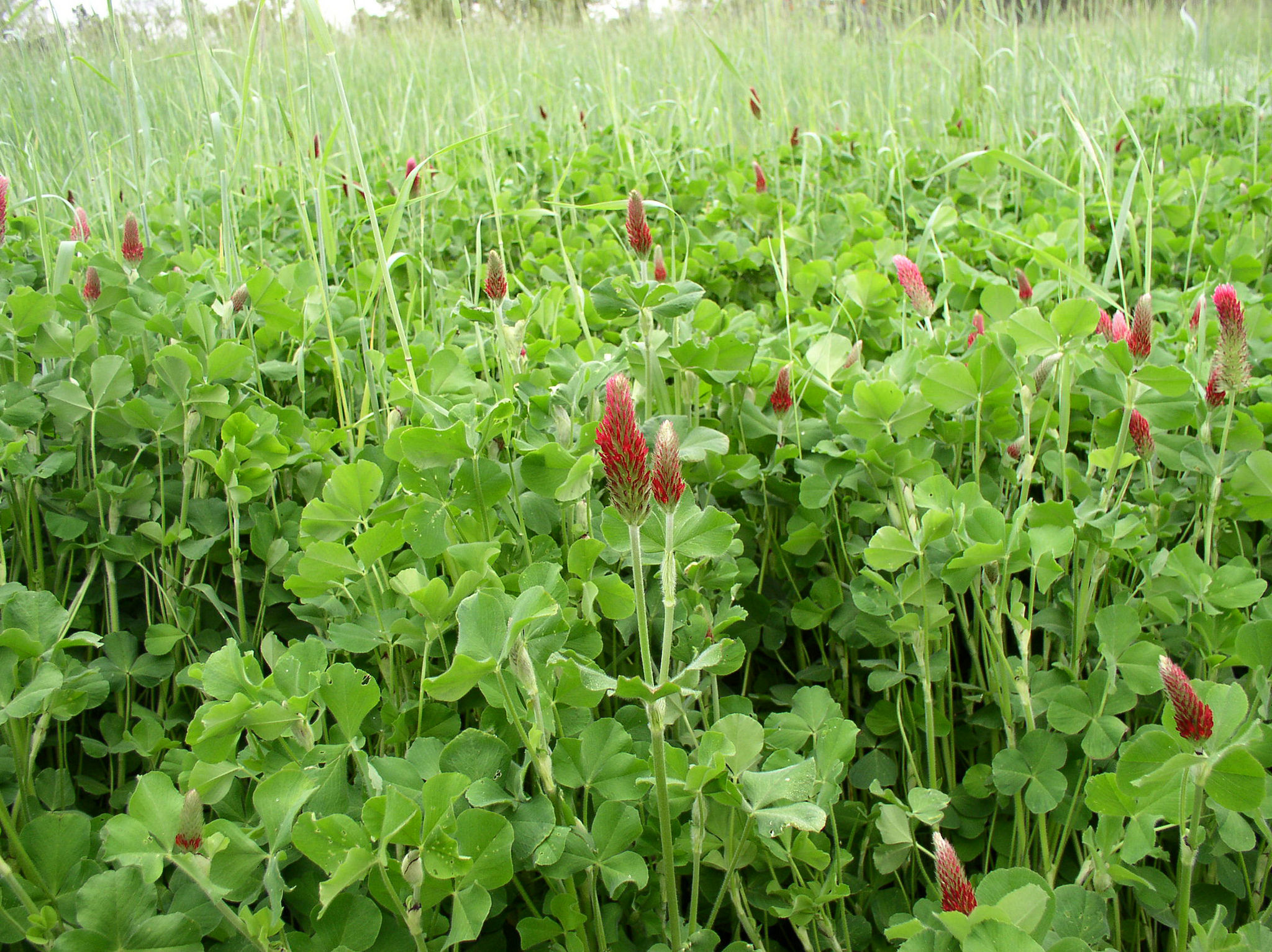This is the third blog of a series describing the five methods that make up regenerative agriculture—perennial plants & diverse crops, zero/low tillage & mulching, cover cropping & crop rotation, composting, and managed grazing. Implementation of these methods is site specific and depends on soil characteristics, crops grown, and local climates. Practices are rooted in organic methods and can be integrated into farms and pastures transitioning from conventional to organic. They also have a role in smaller-scale climate gardens, where individuals do their part to sequester carbon and contribute to a local, sustainable food system.
All agriculture sequesters carbon from the air through photosynthesis. But, regenerative agriculture ensures more carbon is stored than released and keeps the drawn down carbon underground. This effectively reduces the amount of carbon dioxide in the atmosphere and increases the amount of soil carbon available for healthy crops.
Crop Rotation & Cover Crops
In agriculture, there is major potential for cover cropping and crop rotation to provide beneficial outcomes for the climate and beyond. In modern-day industrial agriculture, lands are often planted with a single crop year after year and/or tilled and left bare (fallow) for long periods of time (aka monocropping). Regenerative agriculture, on the other hand, incorporates the wisdom of including both diverse cover crops and crop rotations. Cover cropping—the growing of beneficial plants during these times of rest or in combination with the primary crop—significantly reduces soil erosion and agricultural runoff from rainstorms or irrigation. Rotating crops across many fields, rather than planting the same monocrop in one location year after year, is another practice that encourages restoration of healthy soil ecosystems.
Farmers can enhance their carbon storage potential by adding mixed species of cover crops and diversifying cropping rotations—both build soil health, store more carbon, and help keep soils covered and their micro-biome (communities of microbes) nurtured year-round. The practices reduce erosion, improve the water holding capacity of soils, and even provide important wildlife habitats.
Cover crops include wheat, barley, peas, clovers, and many others (often grown in mixes), and can be used in consumer products like beers and cereals. The longer a cover crop is maintained and the diversification of the species used—often called a cover crop cocktail—enhance this practice’s ability to restore soil health and increase farmer profitability. Farmers can choose cover crops that use nature to supply their crops with organic nitrogen and rebuild many other key aspects of soil health at the same time. While many farmers recognize these benefits, current crop insurance policies limit farmers’ use of cover crops because the programs are based on outdated science and don’t take into consideration the new information known about cover crops, risk, and nutrient loss reduction strategies.

Similarly, crop rotation helps farmers reduce loss of soil nutrients and the need for petrochemical-based fertilizers and pesticides because their whole farming system encourages healthy soil and provides more natural resistance to pests. This twofold benefit is critical for the health of our communities, as chemical drift and contaminated surface and ground water is a major health threat. This practice also has the potential to provide more nutrient-dense crops for our own healthy diets and increased food security.
If you’re a climate gardener, there’s major potential for you and your garden to benefit from cover cropping and rotating your crops. This resource from the USDA that has in-depth information on all the cover crops you might consider for your specific situation and needs—there is an incredible diversity of options. And, while you may find yourself habitually planting tomatoes in the same place year after year, spend some time thinking about alternative plans to help manage soil fertility (for example, some plants consume much more of some soil nutrients than others) and possible diseases and pests (for example, some families of vegetables attract similar pests, so should be alternated to reduce the likelihood of these specific pests becoming a significant issue).
Whether you’re a consumer, farmer, or climate gardener, cover cropping and crop rotations are important. They are just two of the many tools and practices that make up a regenerative agricultural system and bring many benefits to local ecosystems and the people involved from food production to consumption.
If you do not have access to a garden or farmland, and you’re unable to implement these practices directly, use your consumer power and speak with your dollars to show your support for these important practices. Make your opinion heard when crop insurance policies are being debated in the farm bill. Without strong signals from consumers, and demand from food companies large and small, not enough farmers will switch to these practices in the timeframe needed to reverse current climate trends that threaten food security and the future of our planet. If you have a favorite product or retailer, let them know that you support regenerative agriculture and want to see them sell products that support soil and climate health.





